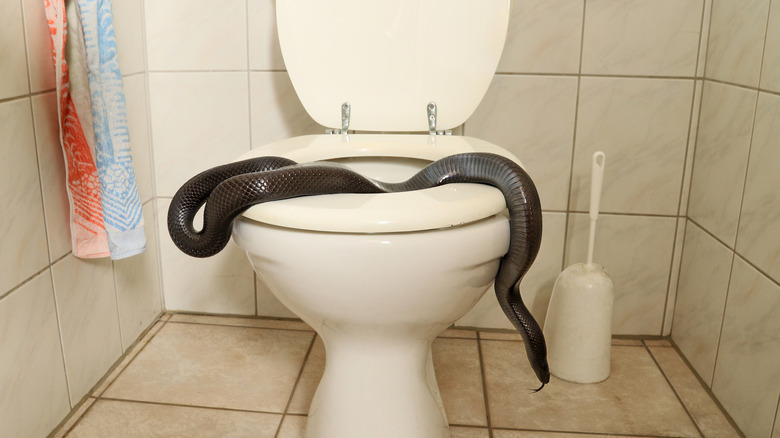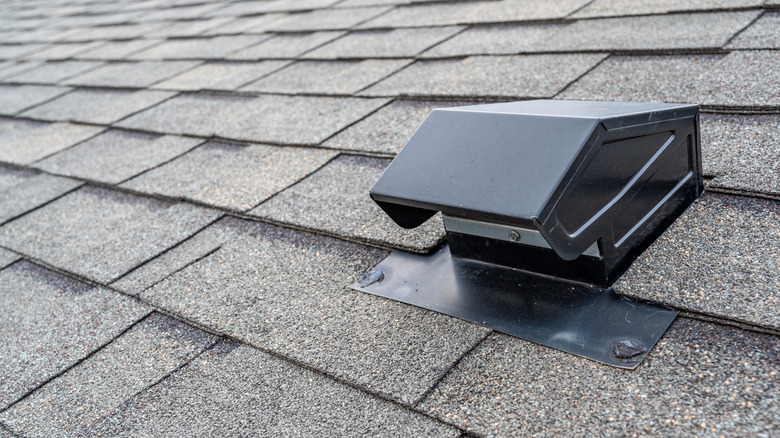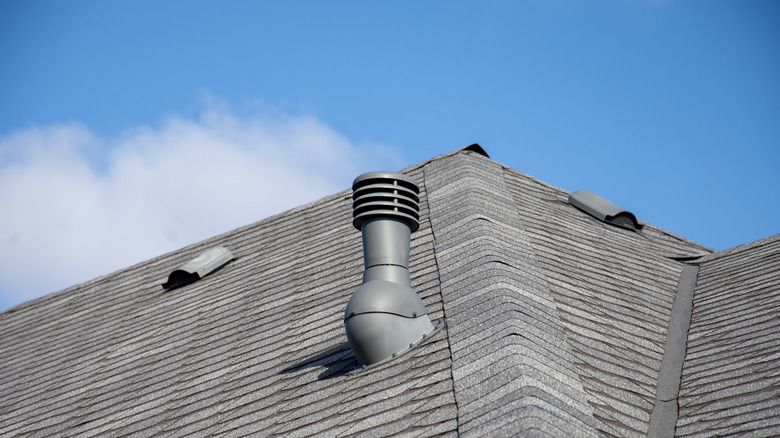Keep Snakes From Slithering Into Your Toilet With One Simple Solution
We may receive a commission on purchases made from links.
There are few things more horrifying than walking into your bathroom only to find an unexpected guest coiled in your toilet bowl. Unfortunately, this nightmare scenario isn't just an urban legend. Snakes and even rodents can slither into your home through your plumbing ventilation system. That's because your home's vent pipes act like a back-alley shortcut, creating a direct path from the roof into your bathroom spigots. Without the right barrier in place, critters looking for warmth or water can slip right in. Gross. Thankfully, you can minimize this from happening by installing a roof vent hood cap. This small but mighty upgrade is designed to seal off the top of your home's plumbing vents while still allowing airflow, so that your drains continue functioning as they should (without doubling as a wildlife welcome mat).
This is a reasonably priced and beginner-friendly project. Installation for a vent cap, similar to the Hon&Guan Roof Vent Cap, typically takes under two hours and costs under $40, depending on its size. For the project, you'll need a vent hood and cap combination made of durable metal, measuring tape, a wrench, tightening screws, a ladder, sealant, a screwdriver, roofing nails, a hammer, gloves, safety goggles, and a jigsaw or reciprocating saw. If you're comfortable with light DIY work and ladder safety, it's absolutely doable on your own, and far less traumatic than encountering a toilet snake. For more upgrades to your ventilation system, here's the best way to vent a bathroom to keep it mold-free.
How to install a roof vent hood cap
A roof vent hood is a protective cap that goes over the top of your home's vertical vent pipes. These pipes allow air to move through your plumbing system so your drains don't gurgle or clog. But without a cover or mesh screen protection, they're open season for pests. A vent hood cap blocks entry without restricting airflow, and choosing one made of galvanized steel, aluminum, or copper means it'll last through all kinds of weather without rusting or warping. Before you start, measure the diameter of your vent pipe so you buy a hood cap that fits snugly. You'll also want to make sure the material can handle extreme temperatures and UV exposure. Something sturdy and corrosion-resistant is key.
For the installation, start from inside your attic and drill a small hole upward through the roof where the pipe vents out. Once you're up on the roof, locate the drilled hole and use a jigsaw or reciprocating saw to expand it to about 4 inches in diameter. Next, outline and remove shingles around the hole to make room for the vent flange. You can use a utility knife with a hook blade, similar to the WEUPE Hook Blade Utility Knife, for precise cutting. To seal and weatherproof it, apply a thick bead of roofing cement or weatherproof flashing to the cut opening. Then, carefully slide the top part under the shingles above the hole and press down firmly. Nail the bottom corners into place using roofing nails to secure them. Lastly, add roofing sealant around the edges and all potential gaps. Maybe snakes aren't a concern, but rather mice and pests are getting into your dryer vent (here's how to get them out).
Extra perks of a roof vent hood cap
Beyond keeping wildlife out of your bathroom, a capped roof vent hood offers other hidden benefits. It helps regulate air pressure in your plumbing system more efficiently, which means better water flow and fewer gurgling or slow drains. It also keeps debris like leaves and twigs out of your vents, which can cause blockages and funky smells inside your home. In colder climates, a vent hood cap can even help reduce the risk of ice buildup inside the pipe (which might otherwise crack or split during a freeze).
If you want to level up the look and performance of your vent hood cap, you've got options. For extra durability and curb appeal, go with copper or powder-coated galvanized steel. These materials resist rust and look sleeker than standard silver. You can also add a mesh roof vent cover over the entire hood for added pest protection. Just make sure it doesn't block airflow. It may be a small detail, but a roof vent hood cap adds a surprising amount of protection, comfort, and peace of mind to your home. If you're having other problems with pests, read up on whether keeping screens on your windows will really keep pests out.


